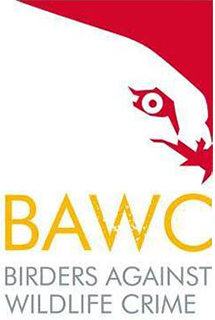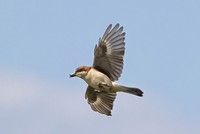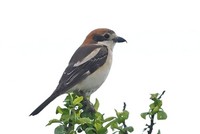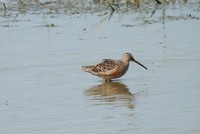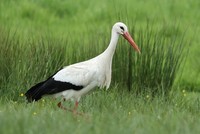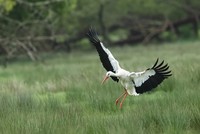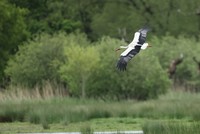Photographing Schedule 1 birds
There has been a stratospheric rise in bird photography over the last decade or so, linked of course to digital cameras and digiscoping, and there are some wonderful bird photographers on the internet
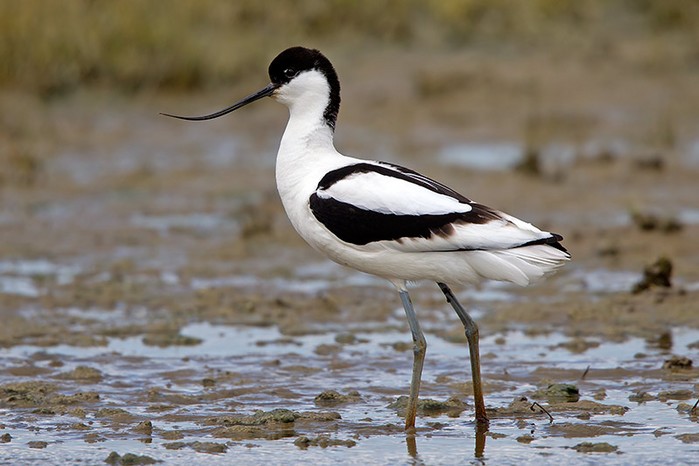
Wanting to take the ‘perfect shot’ is understandable, and while most photographers (and other birders/countryside users of course) always put the welfare of the bird first, unfortunately there are numerous reports of protected nesting species being disturbed by photographers.
Disturbing any breeding bird is morally wrong, but it’s also illegal if a specially protected bird is involved (ie one listed in Schedule 1 of the Wildlife and Countryside Act 1981). An additional consideration is that many specially protected species breed on nature reserves created specifically for them: disturbance not only risks the breeding success of the birds involved, but also wastes the time of wardens who are having to deal with photographers at a crucial and very busy time of the year. In the UK the laws relevant to photography and Schedule 1 birds might seem a little confusing at first, but they are in fact fairly straightforward.
Photographers need to be particularly aware of laws that relate to disturbing bird species listed under Schedule 1 of the Wildlife and Countryside Act 1981. While the list of species needs updating, it does include some ‘common’ birds that photographers may not realise are on Schedule 1 including Barn Owl, Kingfisher, and both Dartford and Cetti’s Warblers. (Note that while this information is intended to primarily help photographers understand the law, it applies to all birders/countryside users: disturbing breeding birds is illegal with or without a camera. Also note the following applies to the UK only)
Let’s help tackle the illegal disturbance of Schedule 1 birds by photographers
Recognise

While birders/photographers have a moral duty not to harass or harm any bird in any way – the well-used mantra is that the welfare of the bird is more important than the photograph – no offence is committed just photographing, for example, a wild bird in your garden, at a reserve or at a migrant hot spot even if it is on Schedule 1.

Where photographers do break the law it is usually when causing disturbance when photographing specially protected birds during the nesting season. The nests and eggs of wild birds are already protected by law and it is an offence to remove nestlings or eggs from a nest for photography even on a temporary basis – but extra protection is also given to the adults as well as young of species listed under Schedule 1 of the Wildlife and Countryside Act 1981.
- There is no problem photographing wild Schedule 1 birds well away from the nest, but it is illegal without the necessary Licence from Natural England (or other licensing authority) to photograph any of these species IF the photographer intentionally or recklessly disturbs the bird whilst trying to photograph it while it is nest-building is in, on, at or near the nest or whilst it has dependent young.
- In Scotland it is also an offence to recklessly or intentionally disturb or harass any Schedule 1 bird while it is lekking (ie Capercaillie and Ruff)
- In Ireland, as part of the Wildlife (Amendment) Act, 2000 (1979) a licence is required to take or make photographic, video or other pictures of a protected wild bird of a species specified in the licence on or near a nest containing eggs or unflown young,
A photographer disturbing a Schedule I species in, on, at or near the nest etc may be committing a criminal offence punishable by a fine of up to £5,000 and/or a prison sentence of up to 6 months.
Schedule One species
|
Avocet Bee-eater Bittern Bittern, Little Bluethroat Brambling Bunting, Cirl Bunting, Lapland Bunting, Snow Buzzard, Honey Capercaillie (in Scotland) Chough Corncrake Crake, Spotted Crossbill (all species) Diver (all species) Dotterel Duck, Long-tailed Eagle, Golden Eagle, White-tailed Fieldfare Firecrest Garganey Godwit, Black-tailed Goshawk Gyrfalcon |
Grebe, Black-necked Grebe, Slavonian Greenshank Gull, Little Gull, Mediterranean Harriers (all species) Heron, Purple Hobby Hoopoe Kingfisher Kite, Red Merlin Oriole, Golden Osprey Owl, Barn Owl, Snowy Peregrine Petrel, Leach’s Phalarope, Red-necked Plover, Kentish Plover, Little Ringed Quail, Common Redstart, Black Redwing Rosefinch, Scarlet Ruff Sandpiper, Green |
Sandpiper, Purple Sandpiper, Wood Scaup Scoter, Common Scoter, Velvet Serin Shorelark Shrike, Red-backed Spoonbill Stilt, Black-winged Stint, Temminck’s Stone Curlew Swan, Bewick’s Swan, Whooper Tern, Black Tern, Little Tern, Roseate Tit, Bearded Tit, Crested Treecreeper, Short-toed Warbler, Cetti’s Warbler, Dartford Warbler, Marsh Warbler, Savi’s Whimbrel Woodlark Wryneck |
Disturbance
- The best way to understand disturbance, whether intentional or reckless (ie pursuing a course of action while consciously disregarding the fact that the action gives rise to a substantial and unjustifiable risk), is to think that it includes any action that causes a nesting Schedule 1 bird to behave differently to how it would behave if the photographer wasn’t there.
- This includes getting too close and flushing, alarming, or causing a nesting bird listed on Schedule 1 to stop what it was doing; and/or using a recording/tape lure that causes a nesting bird listed on Schedule 1 to react in any way at all whether that behaviour is a ‘normal’ response to hearing the call or not.
- It is not an excuse for a person to claim that they thought that no nesting activity was taking place.
In basic terms, when it comes to Schedule 1 birds, if a photographer does anything that causes a nesting adult or their young to change behaviour they are breaking the law. Additionally irresponsible disturbance may put a bird at risk, cause a nest to fail, or allow eggs or dependent young to be predated or harmed.
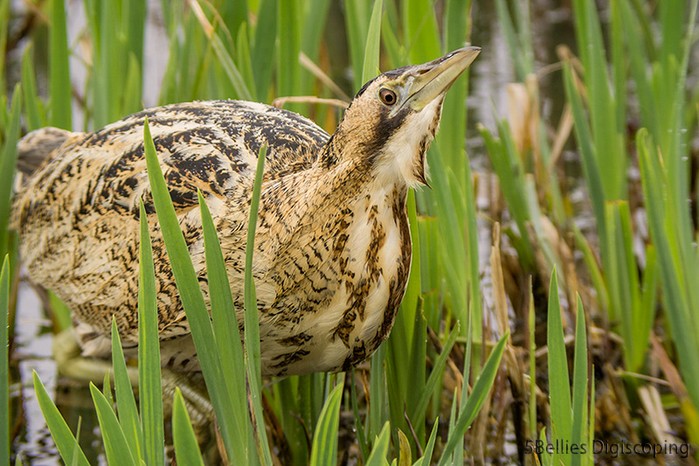
Distance from the nest
The law does not set a minimum distance that photographers (or anyone for that matter) must keep from the nest of a Schedule 1 species.
- This is because it is not possible to define exactly at what distance a bird may be disturbed, feel threatened, or change behaviour. In some cases this may be as far as several hundred yards away. If in any doubt, we have both a legal and a moral duty to keep our distance.
- Sometimes of course protected birds nest close to a right of way used by the public – most of whom will be unaware of the presence of the bird. The laws on disturbance however still apply, and photographing a Schedule 1 bird or its nest site from a public footpath is still illegal IF the bird is disturbed in any way and for any reason unless the photographer has the necessary licence.
Using a public hide to photograph Schedule 1 birds
Where there does ‘appear’ to be blurring of the lines is when photographers are using hides at nature reserves that are built close to where Schedule 1 birds are nesting (eg at Minsmere RSPB to photograph Avocets).
Again, though, the same laws apply, and the key word is disturbance. It is not illegal to photograph a nesting Schedule 1 species IF no disturbance is caused. If a photographer were to try to attract the attention of a nesting bird while in the hide (by for example making clicking noises or throwing stones anywhere near enough to the bird to get a reaction) then that would be illegal. Leaving the hide to get a better photograph and disturbing the bird would, again, be illegal.
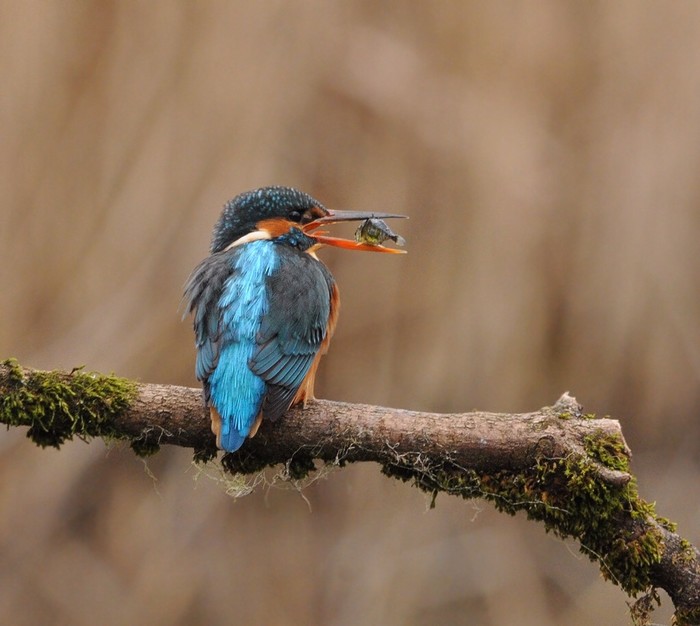
Obtaining a licence for photographing Schedule 1 birds
In England the Licensing authority is Natural England: different licensing authorities operate in Scotland, Wales and Northern Ireland, but the criteria for issuing licences are basically the same.
- licences are issued on a strict quota system
- licences are issued only to those photographers that can demonstrate knowledge of the breeding ecology of the species concerned and the photographic skills and fieldcraft to undertake nest photography without causing undue disturbance to the birds (usually by submitting photographs they’ve taken of non-Schedule 1 birds showing normal and undisturbed breeding activity at the nest)
- In Scotland, if a licence applicant has not held a similar licence in the past 5 years they are required to provide names and addresses of two referees who are familiar with his or her work in the field, and preferably who have carried out this type of work themselves. Applicants need to provide at least 5 of their own images or samples of film that should demonstrate their skill in wildlife photography
- Licences are site-specific – a licence issued to photograph for example Peregrines in Lancashire does not entitle the holder to photograph Peregrines (or any other Schedule 1 species) in Scotland
For detailed information on obtaining a licence in England click here.
Record
Clearly if the crime being committed is disturbance of Schedule 1 birds, then we need to keep a proper distance ourselves to avoid also committing an offence.
- From a proper distance make a note of the date and time and take photographs or video of the scene using a mobile phone or camera etc (or make as accurate a sketch as possible). Recording the offender’s face is important of course, but their clothing, the bags they’re carrying, the equipment they’re using are all important too. Do NOT try to get too close – aside from breaking the law ourselves, taking some long-distance images is better than having a camera smashed or being attacked and hurt
- Note the location as accurately as possible, preferably using a grid reference (free smartphone apps are widely available). If the crime is in an urban area note the address or any other recognisable description of the location.
- Photograph any vehicle registration numbers that are or might be related to the incident. Even if we’re not sure whether the vehicle is involved or not, it is legal to record a registration number if we suspect that the vehicle has been or may be used in a crime. The number may also well be useful to the authorities in the future and help build up a more complete picture of eg a serial offender’s movements.
Report
- If you think a crime is taking place that involves illegal disturbance of Schedule 1 birds call your local Wildlife Crime Officer or police force on 999. If the crime/event is over or you have information about a crime then call 101.
- If you see a wildlife crime taking place on a wardened reserve please find or contact the warden. They have authority over the site/location and usually have a good working relationship with local police or investigation officers.
- Schedule 1 offences are often investigated by the RSPB’s Investigations Unit. Where an offence is considered to have been committed the matter is usually referred to the Police for further investigation and possible prosecution.
Birders Against Wildlife Crime
07 April 2015
Note: images used in this article were all taken, legally, from public hides on nature reserves.

